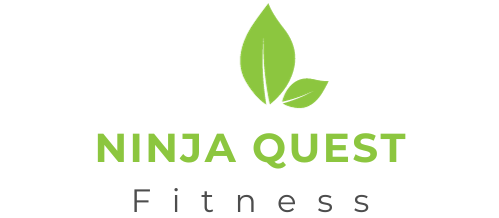Are you expecting a little bundle of joy? Congratulations! Pregnancy is an incredible journey, but it can also come with its fair share of aches and pains. The good news is that exercise can be a game-changer when it comes to managing discomfort and staying healthy during this special time. In this blog post, we’ll share the best exercises for pregnancy that can help strengthen your muscles and keep you feeling your best.

Contents
- 1 12 Best Exercises For Pregnancy
- 1.1 1. Wall Pushups
- 1.2 2. Squats with a Fitness Ball
- 1.3 3. Leg Raises
- 1.4 4. Step-Ups
- 1.5 5. Modified Side Plank
- 1.6 6. Supported V-Sits
- 1.7 7. V-Sits on Top of a Balance Trainer
- 1.8 8. One-Leg V-Sits
- 1.9 9. Seated Rowing with Resistance Tubing
- 1.10 10. Seated Dead Lifts with Resistance Tubing
- 1.11 11. Pelvic Curl
- 1.12 12. Mermaid Stretch
- 2 Benefits of Exercise During Pregnancy
- 3 Frequently Asked Questions
12 Best Exercises For Pregnancy
During pregnancy, it is essential to prioritize exercises that support and strengthen your body while minimizing any risks. Here are some of the best exercises you can incorporate into your pregnancy fitness routine:
1. Wall Pushups
Wall pushups are a great way to work the pectoral muscles in the front of your chest and the triceps muscles in the back of your upper arms. To perform wall pushups:
- Stand facing a wall with your knees comfortably apart.
- Place your hands on the wall at shoulder level, slightly wider than shoulder-width apart.
- Slowly bend your elbows and lower your chest until your chin reaches the wall.
- Keep your back straight and then return to the starting position.
- Gradually work up to 15 repetitions.
2. Squats with a Fitness Ball
Squatting during pregnancy can help open the pelvis and allow more room for your baby to move through the birth canal. Using a fitness ball for squats adds stability and support. Here’s how to do it:
- Stand with your feet shoulder-width apart and place the fitness ball against a wall.
- Lean against the fitness ball as you lower yourself into a squatting position.
- Keep your back straight and knees aligned with your toes.
- Slowly return to the starting position.
- Repeat for a total of 12-15 repetitions.
3. Leg Raises
Leg raises are an effective exercise for strengthening your abdominal muscles, which can help support your growing belly. Here’s how to do leg raises:
- Lie flat on your back with your arms by your sides.
- Bend your knees and keep your feet flat on the ground.
- Slowly raise one leg towards your chest, keeping the other leg bent.
- Lower your leg back down and repeat with the other leg.
- Aim for 10-12 repetitions on each leg.
4. Step-Ups
Step-ups are a low-impact exercise that targets your leg muscles while also providing cardiovascular benefits. To do step-ups:
- Find a sturdy step or platform.
- Step one foot onto the platform, followed by the other foot.
- Step back down, leading with the opposite foot.
- Repeat for 10-12 repetitions on each leg.
5. Modified Side Plank
The modified side plank is a safe way to engage your core muscles without putting too much pressure on your abdomen. Here’s how to do it:
- Lie on your side with your elbow directly under your shoulder.
- Place your top hand on your hip or extend it towards the ceiling.
- Lift your hips off the ground, forming a straight line from your head to your feet.
- Hold for 15-30 seconds, then lower your hips back down.
- Repeat on the other side.
6. Supported V-Sits
V-sits engage your core muscles and help improve your posture. To perform supported V-sits:
- Sit on the edge of a stable chair or fitness ball.
- Lean back slightly while keeping your back straight.
- Lift your knees towards your chest and extend your arms forward.
- Hold this position for 10-15 seconds, focusing on engaging your abdominal muscles.
- Lower your feet back down and repeat for a total of 8-10 repetitions.

7. V-Sits on Top of a Balance Trainer
V-sits performed on top of a balance trainer add an extra challenge to your core workout. Here’s how to do it:
- Sit on top of a balance trainer with your knees bent and feet flat on the floor.
- Lean back, balancing on your sit bones while keeping your back straight.
- Extend your legs forward and simultaneously lift your upper body, creating a V shape.
- Hold this position for 10-15 seconds while engaging your core muscles.
- Slowly lower yourself back down and repeat for a total of 8-10 repetitions.
8. One-Leg V-Sits
One-leg V-sits are advanced exercises that target your core, hip flexors, and balance. Here’s how to perform them:
- Sit on the floor with one leg extended and the other bent, foot flat on the floor.
- Lean back, balancing on your sit bones while keeping your back straight.
- Lift your extended leg off the ground, reaching towards your toes with your opposite hand.
- Hold for a few seconds, then lower your leg and repeat on the other side.
- Aim for 6-8 repetitions on each leg.
9. Seated Rowing with Resistance Tubing
Seated rowing with resistance tubing is a safe and effective way to strengthen your back muscles and improve your posture. Here’s how to do it:
- Sit on a chair with your legs extended and the resistance tubing securely anchored.
- Hold onto the tubing handles with your palms facing in.
- Pull your elbows back, squeezing your shoulder blades together.
- Slowly release and repeat for 10-12 repetitions.
10. Seated Dead Lifts with Resistance Tubing
Seated dead lifts with resistance tubing target your glutes, hamstrings, and lower back muscles. Here’s how to perform them:
- Sit on a chair with your legs extended and the resistance tubing securely anchored.
- Hold onto the tubing handles, palms facing in.
- Lean forward from your hips, keeping your back straight.
- Slowly return to the starting position.
- Aim for 10-12 repetitions.

11. Pelvic Curl
The pelvic curl is a gentle exercise that helps strengthen your core and improve flexibility. Here’s how to do it:
- Lie on your back with your knees bent and feet flat on the floor.
- Slowly lift your hips off the ground, creating a bridge with your body.
- Hold for a few seconds, then lower your hips back down.
- Repeat for a total of 10-12 repetitions.
12. Mermaid Stretch
The mermaid stretch helps stretch and release tension in your side body and hips. Here’s how to do it:
- Sit on the floor with one leg bent, foot flat on the ground, and the other leg extended to the side.
- Reach your arm toward the extended leg, creating a gentle side stretch.
- Hold for 15-30 seconds, then switch sides.
Benefits of Exercise During Pregnancy
Regular exercise during pregnancy offers numerous benefits for both you and your baby. Here are some key advantages of staying active during this special time:

- Improved Physical Well-being: Exercise helps your body adapt to the changes that occur during pregnancy. It can reduce common discomforts such as constipation, bloating, swelling, and backaches. By engaging in physical activity, you can also improve your posture, muscle tone, strength, and endurance.
- Mood Enhancement: Pregnancy can bring about fluctuations in hormones, leading to mood swings. However, exercise releases endorphins, which are natural mood enhancers. By staying active, you can boost your mood and reduce feelings of stress and anxiety.
- Better Sleep: Many pregnant women struggle with getting enough sleep due to physical discomfort and hormonal shifts. Regular exercise can help promote better sleep by reducing insomnia and improving sleep quality. However, it’s important to avoid intense workouts closer to bedtime to prevent overstimulation.
- Increased Energy Levels: It may seem counterintuitive, but staying active can actually give you more energy during pregnancy. By incorporating exercise into your routine, you can combat feelings of fatigue and boost your overall energy levels, helping you better cope with the demands of daily life.
- Prevention and Treatment of Gestational Diabetes: Gestational diabetes is a common condition that can develop during pregnancy. However, studies have shown that regular exercise can help prevent or manage this condition. Exercise helps regulate blood sugar levels and improve insulin sensitivity, reducing the risk of gestational diabetes.
- Preparation for Labor: Being fit and active during pregnancy can prepare your body for the physical demands of labor. Regular exercise helps strengthen your pelvic floor muscles, which play a crucial role during childbirth. Additionally, staying active can enhance your physical endurance, enabling you to cope better with the challenges of labor.
Frequently Asked Questions
What positions should you avoid while pregnant?
During pregnancy, it is best to avoid lying flat on your back for extended periods of time, especially after the first trimester. This position can put pressure on major blood vessels and decrease blood flow to the baby. It is recommended to sleep on your side, preferably the left side, as it improves blood circulation and reduces the risk of stillbirth.
Is it safe to do planks while pregnant?
Yes, planks can be safe to do during pregnancy if you have been regularly performing them before pregnancy and your healthcare provider approves. However, it is important to modify the exercise by keeping your knees on the ground or using a stability ball to support your abdomen. Always listen to your body and stop if you experience any discomfort or pain.
How much weight do you gain by 20 weeks pregnant?
Weight gain during pregnancy varies for each woman. On average, by 20 weeks pregnant, you may have gained between 10 to 20 pounds (4.5 to 9 kilograms). However, it is important to remember that this is only a general guideline. Consult with your healthcare provider to determine what is healthy and appropriate for your specific pregnancy.

Hello, I’m Ravindra. Over the years, I’ve immersed myself deeply into the world of fitness and health, transforming both my body and mind. Writing has allowed me to share my journey, insights, and expertise with those just starting out and seasoned fitness enthusiasts alike. Beyond just routines and diets, I believe in inspiring others to adopt a holistic approach to well-being.
